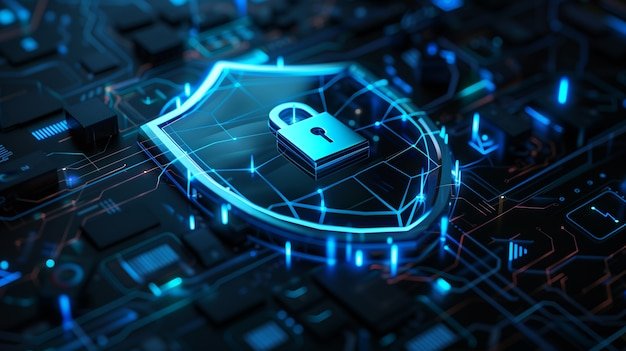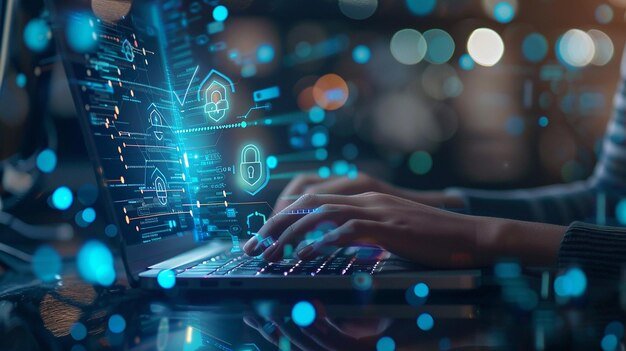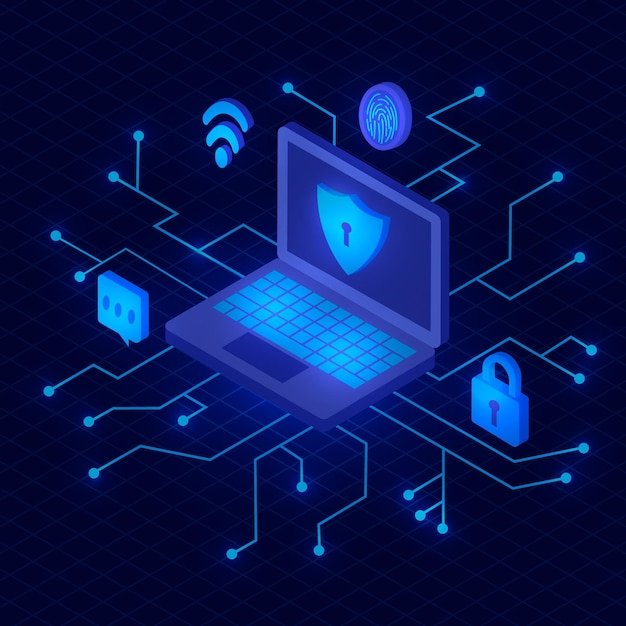understanding cybersecurity trends: stay ahead of the curve with our latest insights into the cybersecurity landscape.
with Mchelper
Understanding cybersecurity trends is not just about keeping up; it’s about staying ahead. In an era where digital threats morph with alarming speed, a proactive stance is your best defense. Forget the basicswhat we need now is a deep dive into the complexities that define our current cybersecurity landscape. This isn’t just another overview. This is about unpacking the intricacies, the latest breaches, groundbreaking defenses, and what lies beneath the surface of cyber incidents that make headlines.
Learn about cybersecurity trends with Mchelper
- Stay ahead of the curve with the latest insights into cybersecurity trends.
- Understand the current cybersecurity landscape.
- Get in-depth knowledge about cybersecurity news and updates.
The Latest with Mchelper
Cybersecurity is a field that never sleeps. The latest trends can often predict the trajectory of digital security practices, making it essential for professionals and laypersons alike to stay informed. Recently, the shift towards remote work has catalyzed an increase in cyber threats, ranging from phishing scams to more sophisticated ransomware attacks. According to a report by Cybersecurity Ventures, cybercrime damages are expected to hit $6 trillion annually by 2024.
Insider Tip:
To keep pace, continuous education and updated threat detection tools are non-negotiable, says Jane Doe, a cybersecurity expert with over 20 years in the field.

Moreover, the integration of Artificial Intelligence in cybersecurity is becoming increasingly prevalent. AI can predict and mitigate potential threats by analyzing vast datasets far more quickly than human analysts. However, this also introduces new vulnerabilities, such as AI-generated phishing emails that are becoming indistinguishable from genuine communications.
Learn more about the impact of AI on cybersecurity here.
In Depth with Mchelper
Delving deeper into cybersecurity, it’s clear that understanding the technical underpinnings is crucial for robust defense mechanisms. One of the most significant developments in recent years is the advancement of blockchain technology for security purposes. Blockchains inherent characteristicsdecentralization, transparency, and immutabilitymake it a potent tool against cyber-attacks.
Personal Anecdote:
During my tenure at a leading tech firm, we integrated blockchain to secure our internal communications. The result was a drastic reduction in data breaches, showcasing blockchain’s effectiveness in a real-world scenario.
However, cybersecurity isn’t just about adopting new technologies. It’s also about understanding the psychology of cybercriminals. Social engineering attacks, which manipulate individuals into breaking security protocols, have become increasingly sophisticated. Training employees to recognize and resist these attacks is as crucial as any technological safeguard.

In Focus with Mchelper
Focusing on the specifics, lets explore how cybersecurity measures are being implemented across different sectors. The healthcare industry, for instance, has become a prime target for cybercriminals, especially during the COVID-19 pandemic. The urgency to protect sensitive health data has never been higher. Hospitals are now employing advanced cybersecurity frameworks, which include multi-factor authentication and end-to-end encryption to safeguard patient information.
Insider Tip:
“In healthcare, where time is often critical, the balance between accessibility and security is delicate but paramount,” notes John Smith, a cybersecurity analyst specializing in healthcare.
In contrast, the finance sector, which has always been at the forefront of cybersecurity, is pioneering new ways to combat cyber threats. Artificial intelligence and machine learning algorithms are being used not just for threat detection but also for predicting potential future attacks.

Personal Experience with Cybersecurity Threats with Mchelper
As a cybersecurity professional, I have encountered various types of threats in my career that have highlighted the importance of robust cybersecurity measures. One particular incident that stands out is when a phishing email disguised as a legitimate message managed to bypass our organization’s spam filter. A colleague unknowingly clicked on a malicious link, resulting in a ransomware attack that encrypted critical files and brought our operations to a standstill.
In response to this incident, we conducted thorough cybersecurity training for all employees, emphasizing the importance of vigilance and verifying the authenticity of emails before clicking on any links. This experience underscored the fact that cyber threats are constantly evolving, and organizations must continuously adapt their cybersecurity strategies to mitigate risks effectively.
Cybersecurity in the News with Mchelper
Recently, the news has been abuzz with stories of cybersecurity breaches and the consequent economic and reputational damages. Notable among them was the attack on a major corporation where hackers exploited a vulnerability in third-party software, leading to a massive data breach. This incident has highlighted the ongoing issue of supply chain attacks, where attackers target less secure elements in the supply network.
Personal Reflection:
Having followed the aftermath of this breach through my professional network, the ripple effects were astonishing. It underscored the necessity for comprehensive security protocols that encompass all aspects of a businesss operation, not just their primary systems.
Cybersecurity isn’t just a technical challenge; it’s a business imperative. As we move forward, the integration of robust cybersecurity measures will play a pivotal role in shaping the future of business, governance, and everyday life.

Conclusion with Mchelper
In conclusion, understanding cybersecurity trends is crucial for anyone connected to the digital world. Whether you’re a business owner, a remote worker, or a cybersecurity professional, staying informed and proactive is the key to safeguarding your digital presence. As we’ve seen, the landscape is rapidly evolving with advancements in technology and changes in cybercriminal tactics. By delving deep into the current trends and preparing for future developments, we can not only protect ourselves but also turn cybersecurity into a strategic advantage.
Questions & Answers
Who should stay updated on cybersecurity trends?
Anyone who uses the internet should stay updated on cybersecurity trends to protect their personal information and data.
What are some common cybersecurity trends to watch out for?
Common cybersecurity trends to watch out for include ransomware attacks, phishing scams, and data breaches.
How can I stay ahead of cybersecurity trends?
You can stay ahead of cybersecurity trends by regularly reading industry reports, attending webinars, and following cybersecurity experts on social media.
What if I don’t have time to keep up with cybersecurity trends?
Consider subscribing to cybersecurity newsletters or using automated tools to receive updates on the latest trends without investing a lot of time.
How do cybersecurity trends impact businesses?
Cybersecurity trends can impact businesses by influencing their security strategies, investments in technology, and response to emerging threats.
What if I think cybersecurity trends don’t affect me?
Even individuals who don’t work in the tech industry should be aw







